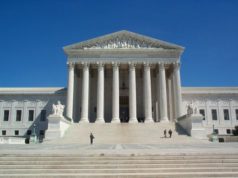Table of Contents

In the mid-1930s, the United States was facing a severe economic crisis known as the Great Depression, which had brought about unprecedented levels of unemployment, poverty, and suffering. President Franklin D. Roosevelt, who had taken office in 1933, was determined to use the power of the federal government to bring about meaningful change and alleviate the suffering of millions of Americans. However, he faced a significant obstacle in the form of the Supreme Court, which had consistently struck down many of his New Deal programs as unconstitutional. Frustrated with the court’s rulings, Roosevelt put forth a plan to “pack” the court with more sympathetic justices. This plan, known as the Court Packing Plan, remains one of the most controversial episodes in American political history.
The Supreme Court and the New Deal
To understand why FDR proposed the Court Packing Plan, it is essential to understand the context of the times. The Great Depression had plunged the American economy into a severe crisis, with widespread unemployment, poverty, and social unrest. To combat these problems, Roosevelt and his administration proposed a series of programs and policies collectively known as the New Deal. These programs aimed to provide economic stimulus, social welfare, and infrastructure development, among other things.
However, many of these programs ran afoul of the conservative majority on the Supreme Court, which saw them as unconstitutional encroachments on the powers of the states and limitations on individual liberty. In particular, the court’s rulings in cases such as Schechter Poultry Corp. v. United States (1935) and United States v. Butler (1936) struck down key components of the New Deal, including minimum wage and maximum hours laws and the Agricultural Adjustment Act.
Roosevelt was infuriated by these decisions, which he saw as an obstruction to his efforts to address the economic and social problems facing the country. He believed that the Supreme Court had become a bastion of conservative, out-of-touch judges who were more interested in protecting property rights than promoting the common welfare. He also believed that their rulings were based more on ideology than on sound legal principles, and that they were failing to account for the changing social, economic, and political realities of the nation.
FDR’s Court Packing Plan
Frustrated by the court’s rulings, Roosevelt decided to take drastic action. On February 5, 1937, he announced his Court Packing Plan, which called for the appointment of up to six additional justices to the Supreme Court, bringing the total number of justices to as many as 15. Roosevelt argued that the court was overworked and unable to keep up with the volume of cases, and that additional judges were needed to relieve the burden and ensure that key New Deal programs could be implemented without being struck down by the court.
However, the real motive behind the plan was widely understood to be political. By appointing additional judges, Roosevelt hoped to tip the balance of power on the court in favor of his New Deal policies. He was particularly concerned about the “Four Horsemen,” a group of conservative justices who had consistently voted against his programs. By appointing more sympathetic judges, Roosevelt hoped to break this conservative bloc and ensure that his programs could withstand constitutional challenges.
The reaction to Roosevelt’s plan was swift and intense. Conservatives and many legal experts denounced the plan as an unprecedented power grab that would undermine the independence of the judiciary and erode the separation of powers. They argued that Roosevelt’s true aim was to pack the court with liberal judges who would support his policies, regardless of their legal merit.
Opposition to the Plan
One of the most vocal opponents of the Court Packing Plan was Chief Justice Charles Evans Hughes, who argued that the proposal was a clear violation of the principle of separation of powers. The chief justice was particularly concerned by the fact that Roosevelt had not consulted with him or other members of the court before announcing the plan, and that he had not conducted any serious study of the court’s workload or structure. Hughes argued that the president’s plan was an unprecedented attack on the independence of the judiciary and would set a dangerous precedent for future administrations.
Many members of Congress also spoke out against the proposal, including prominent Democrats such as Senator Burton K. Wheeler of Montana and Representative Hatton W. Sumners of Texas. They argued that the president’s plan was an overreach of executive power and would destroy the balanced system of government that had served the country well for more than a century.
The Hearings
Despite the backlash, Roosevelt remained committed to his plan and urged Congress to pass legislation that would enable him to appoint additional judges to the Supreme Court. To this end, the Senate Judiciary Committee held several weeks of intense hearings on the plan, which became known as the “Court Packing Hearings.”
The hearings were highly contentious and attracted widespread media attention. Proponents of the plan argued that the court was overstretched and unable to keep up with the volume of cases, and that additional judges were needed to ensure that justice was delivered in a timely manner. They also argued that the plan would help to modernize the court and bring it in line with changing social and economic realities.
Opponents of the plan countered that the president was motivated by political concerns, not concerns about justice or efficiency. They argued that the plan would undermine the independence of the judiciary and allow the executive branch to exert undue influence on the courts.
In the end, the Court Packing Plan was defeated in Congress, with many Democrats joining forces with Republicans to vote it down. Although Roosevelt was disappointed by the outcome, he continued to pursue his New Deal policies through other means, and the Supreme Court gradually shifted its position on many key issues.
Legacy of the Court Packing Plan
The Court Packing Plan remains one of the most controversial episodes in American political history. Although it was ultimately unsuccessful, it drew attention to the role of the Supreme Court in American governance and raised important questions about the limits of executive power and the proper relationship between the three branches of government.
Moreover, the defeat of the Court Packing Plan had significant implications for the Roosevelt administration and for American politics more generally. It was seen as a warning to the president that he could not simply overcome opposition by brute force, and that he would need to work with Congress and other stakeholders to achieve his goals. It was also seen as a victory for constitutional government and the rule of law, and a recognition that the power of the presidency must be exercised within the confines of the Constitution and the laws of the land.
Conclusion
The Court Packing Plan was a bold and controversial proposal that sought to transform the Supreme Court and tip the balance of power in favor of the Roosevelt administration. Although it failed to pass Congress, it raised important questions about the role of the Supreme Court in American governance and the limits of executive power. It also demonstrated the resilience of the American constitutional government and the separation of powers, and the importance of working within the system to achieve meaningful change.
The Constitutionally-derived ability of the President of the United States to exercise power in regards to the Supreme Court received a significant test in the form of the Depression-era controversy over the Franklin D. Roosevelt (FDR) Administration’s plan to enact what was termed a “Court-packing” procedure. Through this reform, the FDR White House planned to increase the number of Justices sitting on the Supreme Court, thereby increasing its ability to enact programs under the New Deal rubric aimed at expanding the Government’s power to alleviate the poverty-stricken conditions of the Great Depression.
The Administration pushed for the Court-packing plan with the encouragement of a substantial electoral victory behind it, only to encounter unanticipated levels of political opposition and ultimately, and surprisingly, defeat, which ran against the era’s trend for the general expansion of executive branch power. The FDR Court-packing plan was formally introduced to Congress as part of the Judiciary Reorganization Bill, which was submitted in 1936 and also contained measures for other changes to the Supreme Court, all intended for the general purpose of modernization.
The FDR Administration felt empowered to introduce the Court-packing plan because, in addition to its political clout, the Constitution does not provide for the size of the Supreme Court or for many of the Court’s features other than its basic responsibilities. The number of Justices had originally been set by Congress at six, and after six subsequent changes in policy, was placed at nine in 1869. The President’s power over the Supreme Court is thus limited to the ability to place new nominees into vacant places on the bench.
The so-called Court-packing power would allow the President to select as many as six new Justices to the Supreme Court, each for every member over seventy-and-a-half years of age, with the justification that this would allow for the diminished capabilities of older Justices. When it was unveiled, the FDR Court-packing plan was widely regarded, and in some quarters, attacked as a response to the judicial challenges dealt to the New Deal program by the Supreme Court and the overall perception of the Court as a relatively conservative hold-out in an increasingly liberal climate. The term “Court-packing” was applied at this time to the legislation to express this unfavorable view.
The perception of the Court as being opposed to the New Deal on political principle lost its hold around the same time as the Judiciary Act’s introduction with a shift in the bench’s political balance. One of the Associate Justices began ruling more favorably toward FDR legislation, while another consistent FDR opponent in the Court soon thereafter resigned. At this point many Democratic members of Congress, Roosevelt’s own party, began to oppose the Court-packing procedure. The Bill in general was rejected on these grounds at first and was later allowed only on the basis of the Court-packing provision’s removal. Contrary to what had originally been expected from the legislation, its failure to pass coincided with the formation of a Supreme Court newly supportive of the New Deal, while its introduction cost Roosevelt some of his political support.


























